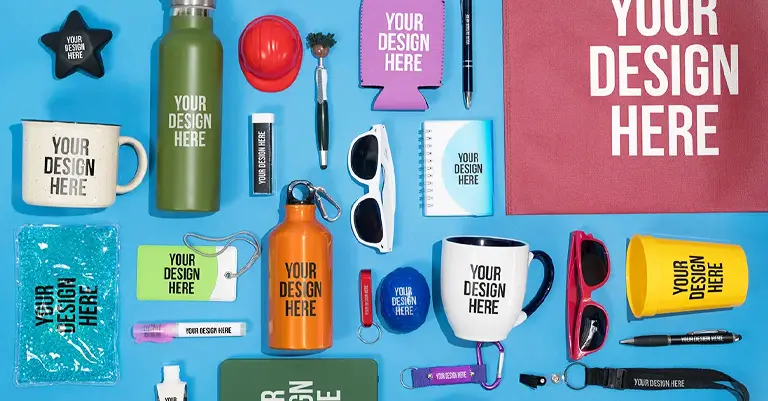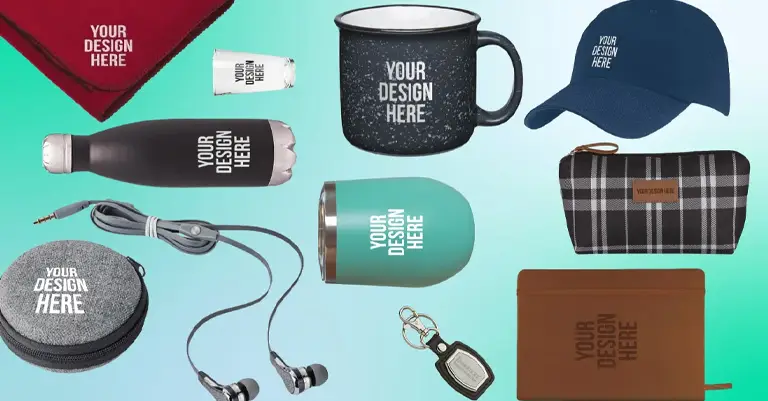Hospitality suites at trade shows are quiet, private areas where companies can meet with guests, showcase products, or hold meetings away from the busy main event. These spaces are designed to reflect the company’s brand and offer a luxurious, comfortable setting for deeper conversations and interactions. They are a trade show’s hidden gem, offering a unique way to connect with people without the usual distractions, serving as an effective branding tool, and leaving a strong impression on visitors. Offering such a personalized and exclusive space demonstrates a company’s commitment to its relationships, setting it apart from competitors and potentially opening doors to new business opportunities and enhancing its image in a busy marketplace.
The Strategic Importance of Hospitality Suites
Hospitality suites at trade shows go beyond being just quiet spaces away from the busy event. They are valuable tools that can boost a company’s visibility, help connect better with people, and build new business relationships. Using hospitality suites smartly can change the game for businesses at trade shows, making them a wise investment for any company looking to stand out and see real benefits.

Enhancing Brand Visibility
Standing out at a crowded trade show can be tricky. Hospitality suites provide a unique chance to highlight a brand away from the busy central area. These exclusive spaces let companies get creative and personal, telling their story more engagingly. They can demonstrate new products or offer themed experiences that reflect their brand’s message. This makes the brand more visible and helps people remember it better.
Building Stronger Business Relationships
Hospitality suites offer a private space at trade shows where people can talk more intensely than on the busy floor. This setting lets guests and hosts have meaningful conversations about what they need and how they might work together. These interactions can make relationships stronger and help start new ones. Because these suites are private and exclusive, they show guests that the company cares about them, whether they’re possible new clients, loyal customers, or essential partners in the industry. This effort can make guests trust and stick with the company more.
Networking in a Relaxed Atmosphere

Networking is vital at trade shows, but the crowded and noisy environment can make it challenging to connect with others. Hospitality suites provide a calm space where people can have honest and deep conversations away from the main event’s hustle. In this more relaxed setting, guests and hosts can share ideas, challenges, and opportunities more openly. This not only helps in making personal connections but also builds a sense of community among attendees. As a result, hospitality suites become a powerful networking tool, helping create lasting professional relationships and open up new opportunities.
Planning Your Hospitality Suite
The success of a hospitality suite at a trade show depends heavily on careful planning and intelligent strategy. Choosing the right location and designing a space that reflects your brand is crucial. Every detail matters in ensuring your suite leaves a lasting impression on your guests.
Choosing the Right Location
Finding the right spot for your hospitality suite is critical to getting more visitors and making it easy for guests to locate. Choose a place near the main activities but also quiet and private. Being close to major attractions or talks can help draw people naturally to your suite. Plus, consider how easy it is to set up, take down, and receive deliveries in that spot. This can save your team time and hassle.
Designing Your Suite for Maximum Impact
The design of your hospitality suite should not only reflect your brand’s identity and create an inviting atmosphere that encourages guests to stay and engage.
Layout
Start by designing a layout that uses the space well and keeps your guests comfortable and moving around quickly. Set up different areas for various needs, such as relaxed seating for casual talks, private areas for serious conversations, and places to display your products. The layout should help people interact and move smoothly through the space.

Branding Elements
Add branding elements throughout the hospitality suite to maintain a uniform style. This includes choosing the right colors and decorations and using videos, displays, and printed items. The goal is to give guests a full brand experience that’s engaging but not too much. Use these elements to tell your company’s story and highlight what separates you. Everything in the suite should help leave a strong, lasting impression of your brand.
Hospitality Suite Activities
The activities you choose for your hospitality suite can enhance the experience for guests and help with your marketing. Select activities that fit your brand and attract your audience. For example, you could have interactive demos, expert talks, or networking meet-ups. Previewing new products or services can also generate buzz and draw visitors. Adding fun or relaxing elements like live music, happy hours, or wellness activities can turn your suite into a popular spot at the trade show. Picking suitable activities can make your suite an engaging and inviting place where people learn and make valuable connections.
Marketing Your Hospitality Suite
Marketing your hospitality suite well is crucial for its success and maximizing your investment. Having a plan that covers before, during, and after the trade show can boost your suite’s visibility and the number of visitors. This way, your suite can become a lively hub for networking and interactions.
Pre-Trade Show Marketing
Begin marketing your hospitality suite long before the trade show starts. Utilize your website, emails, social media, and other platforms to build excitement. Talk about the unique experiences, guests, or previews that visitors will find. Send personalized invites to critical clients, partners, and prospects, pointing out why your suite is a must-see and how it differs from the usual trade show booths. This early effort is vital to creating buzz and ensuring people are eager to visit your suite.
During the Trade Show
After the trade show starts, promote your hospitality suite through different channels. Use social media to post live updates, share highlights, and remind attendees about the activities and schedules. If the trade show has an official app, send notifications about your suite’s events. Eye-catching signs and strategically placing branded materials around the event can also direct people to your suite. Encourage your staff to network on the trade show floor and personally invite attendees to the hospitality suite. This warm, personal touch can make a big difference in attracting visitors.
Post-Trade Show Follow-Up
After the trade show, there’s still significant work to do. A careful follow-up can solidify the relationships you build and amplify the benefits of your hospitality suite. Reach out with a personalized thank-you message to those who visited your suite, highlighting the event’s best parts and restating any special offers or messages. This is an excellent time to give more details about products or services they showed interest in, gather their feedback, or discuss future partnership opportunities. Also, looking at how many people attended and how they interacted with your suite can teach you a lot. Use this information to refine your strategy and assess how well your investment paid off, helping you achieve even better results next time.
Mistakes to Avoid
When setting up a hospitality suite at a trade show, attention to small details and a good marketing plan are crucial to success. But even those who’ve done it before can slip up, which might not let the suite reach its full potential. It’s essential to know and avoid these common errors to truly benefit from your hospitality suite.

Overlooking Important Details
Not paying attention to essential details can impact how guests feel in your hospitality suite. This means ensuring enough staff, good food and drinks, comfortable seating, and a pleasant temperature. If these are overlooked, your suite might not feel inviting, which could keep guests from engaging more or staying longer. Also, if you don’t plan how guests will move around or how to properly welcome and care for them, it can confuse and make people uncomfortable. Careful management of every aspect of your suite, from the start to the finish, is crucial for creating a good experience that makes your brand look good.
Failing to Market Your Suite Properly
Not marketing your hospitality suite enough is a big mistake. Even if your suite is great, you need to get people there. This involves promoting your suite through different channels to get the word out and keep people interested during the trade show. It would be best to keep connecting with attendees using social media, signs, and personal invites. If you don’t focus enough on marketing, not many people might show up, leading to wasted effort and missed opportunities to connect and build relationships. Good marketing ensures people know about your suite, see its worth, and want to come check it out.
Measuring the Success of Your Hospitality Suite
Measuring the success of your hospitality suite in various ways is vital to knowing how it helped your trade show efforts. It lets you see what was effective and what wasn’t, guiding your planning for future events. Choosing key performance indicators (KPIs) and collecting feedback is important to get these insights.

Key Performance Indicators (KPIs)
Picking the right KPIs is essential to measure your hospitality suite’s performance. These KPIs could be how many people visited, the quality of leads you got, how many follow-up meetings you arranged, and the level of engagement with your promotions or social media. Looking at these numbers helps you understand your success, from how visible your brand was to the direct results for your business. For instance, seeing how engaged visitors were can tell if your suite’s design and activities worked well. Checking how many leads turned into sales can show how your suite helped your business grow.
Feedback and Adjustments for Future Events
Along with quantitative data, getting qualitative feedback from guests, staff, and your observations offers profound insights. This could be through surveys, chats, or checking social media to see what people enjoy and what needs work. This kind of feedback is critical for making improvements for next time. For instance, if attendees liked certain talks or activities, you can do more in the future.
Iif they didn’t like some parts or had issues with how the suite was set up, you can change those things to make the suite better and more effective at the next trade show. Mixing the solid data from KPIs with people’s feedback means you’re covering all bases to ensure your hospitality suite keeps getting better.
Closing Thoughts on Trade Show Hospitality Suites
Hospitality suites at trade shows are a game-changer for elevating your brand and deepening business connections in a unique, relaxed setting. Success hinges on thoughtful planning, strategic marketing, and flawless execution, all aimed at creating memorable interactions away from the bustling exhibition floor. To continually enhance the effectiveness of your suite, it’s vital to assess performance through KPIs and gather feedback for improvements.
Avoiding oversights and ensuring your suite is well-marketed are critical steps to making it a central part of your trade show strategy, leaving a lasting impression on visitors. In the competitive world of trade shows, a well-executed hospitality suite can significantly differentiate your brand and foster business growth.
Ready to make your hospitality suite a standout feature? Contact the Buzz Impressions team for expert guidance on arranging top-notch food and drinks to impress your guests. Elevate your trade show presence with Buzz Impressions—contact us today to get started.




